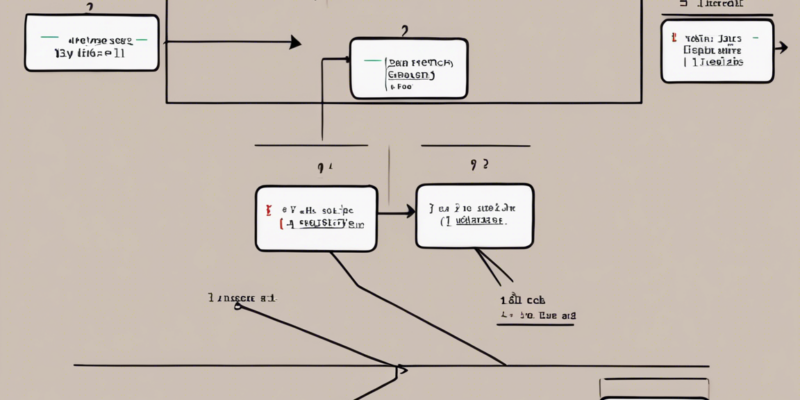In the realm of data structures and algorithms, tree traversal is a fundamental concept. Traversal refers to the process of visiting each node in a tree exactly once, typically in a specific order. There are three common types of tree traversal: inorder, preorder, and postorder. In this article, we will focus on inorder traversal and explore its unique property where traversing a binary search tree (BST) using this method results in a list that is sorted in ascending order. We will delve into the mechanics of inorder traversal, examine its relationship with BSTs, and explore its applications in various domains.
Understanding Inorder Traversal
Inorder traversal is a depth-first traversal technique that first visits the left subtree, then the root node, and finally the right subtree. For a binary tree, applying inorder traversal follows a specific pattern:
- Visit the left subtree recursively.
- Visit the root node.
- Visit the right subtree recursively.
This ordering gives rise to the characteristic property of inorder traversal wherein the nodes are visited in non-decreasing order when applied to a BST.
Inorder Traversal and Binary Search Trees
A binary search tree (BST) is a binary tree data structure where nodes are ordered in a particular way. For any given node:
- All nodes in the left subtree have values less than the node’s value.
- All nodes in the right subtree have values greater than the node’s value.
Due to this ordering, when you perform an inorder traversal on a BST, the nodes are processed in ascending order of their values. This inherent property of BSTs plays a crucial role in searching, sorting, and other operations.
Proof of Concept
To understand why inorder traversal of a BST results in a sorted list, let’s consider a simple proof by induction:
- Base Case: For a tree with a single node, the list is trivially sorted.
- Inductive Hypothesis: Assume that inorder traversal on a BST with k nodes results in a sorted list.
- Inductive Step: When a new node is inserted into the BST (making it a tree with k + 1 nodes), it is placed in such a way that the BST property is maintained. Traversing the updated tree in inorder fashion will lead to a sorted list.
Benefits and Applications
The relationship between inorder traversal and sorted lists has practical implications in computer science and beyond:
- Searching: Inorder traversal allows for efficient searching in BSTs due to the sorted order of nodes.
- Sorting: The sorted nature of inorder traversal can be leveraged for implementing sorting algorithms.
- Expression Parsing: Inorder traversal aids in converting infix expressions to postfix or prefix notations.
- Finding Closest Elements: By traversing a BST in inorder, one can efficiently find the next or previous element relative to a given value.
FAQs About Inorder Traversal and Sorted Lists:
1. Why is inorder traversal specifically suited for sorting in BSTs?
Inorder traversal processes nodes in a left-root-right order, aligning with the increasing order of values in a BST, thereby generating a sorted list.
2. Can a non-BST exhibit the same behavior with inorder traversal?
While inorder traversal on non-BSTs will still visit nodes in an order, the resulting list may not be sorted as in the case of BSTs.
3. How does the concept of recursion tie in with inorder traversal?
Recursion plays a vital role in inorder traversal as it recursively visits left and right subtrees, ensuring the correct order of nodes is maintained.
4. Are there scenarios where preorder or postorder traversal is preferable over inorder traversal?
Yes, depending on the requirements of a specific problem or data structure, preorder or postorder traversal may be more suitable. Inorder traversal’s focus on sorted lists makes it ideal for BSTs.
5. How can the sorted list obtained from inorder traversal be utilized in real-world applications?
The sorted list can be crucial for tasks like maintaining databases, generating sorted reports, implementing search algorithms, and more, making it a versatile tool in various domains.
In conclusion, the connection between inorder traversal and a sorted list in a binary search tree underscores the elegant relationship between tree structures and meaningful data representations. By leveraging this property, developers and computer scientists can optimize algorithms, streamline operations, and unlock new possibilities in their code. Whether you are exploring the foundations of tree traversal or seeking efficient solutions for sorting and searching, understanding the nuances of inorder traversal can be immensely beneficial in your programming journey.


Comments